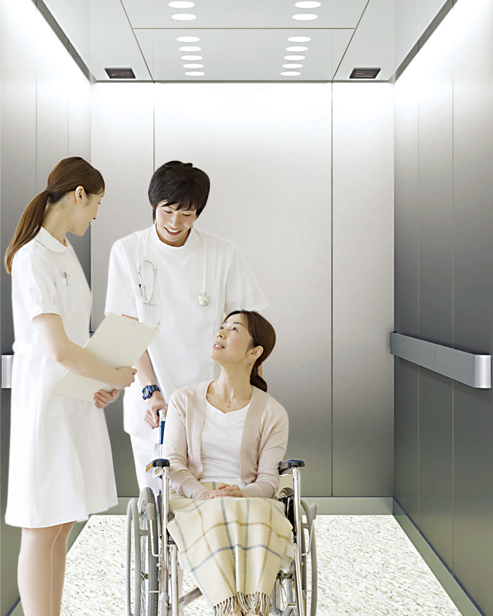China Glass Lifts Manufacturers,Food Elevators Suppliers +86-572-3305657
China Glass Lifts Manufacturers,Food Elevators Suppliers +86-572-3305657
Hospital Elevators and Patient Lifts A hospital elevato […]
Hospital Elevators and Patient Lifts
A hospital elevator must meet certain requirements to ensure patient safety. These include the presence of a seismic switch and a visual annunciator that indicates whether the elevator is operating correctly or not. The annunciator should be visible to the passenger and easily accessible. In addition, the elevator must also comply with the OSHPD1 and ADA standards.
Hospital elevators can be arranged to travel between one and two floors. Several floors are designated as "Express lift" levels. The objective of a hospital elevator is to get patients from one floor to another without having to climb multiple flights of stairs. The staircase is often located next to the elevator bank. Patients may then take the elevator up or down one floor at a time, saving significant time and energy.
A hospital elevator is an essential part of the health care environment. It serves as the lifeline of the patient and should be of the highest quality. It should be quiet and have the ability to stop suddenly in case of emergencies. Ensure that emergency systems are checked regularly and that security issues are addressed promptly. Hospital elevators should be equipped with all the safety features needed for patient safety.
A hospital elevator should also have a hold position on the Code Blue key switch to prevent unauthorized use. This is a safety feature similar to the fire service. If the elevator responds to a hall call, the hold position will prevent the elevator from working until deactivated. The elevator may also be equipped with a special button to activate the Code Blue mode. This will prevent the elevator from responding to the hall call and direct it to a special floor designated for medical services.
In addition to being used in hospitals, hospital elevators are used in buildings. The interior of the elevators is made of stainless steel and the lighting is kept at a level that will not bother the patients. The doors are wider and the car buttons are located lower than other elevators. This makes the elevators accessible for disabled people.
It is also important to avoid inappropriate comments in hospital elevators. While some patients may not be able to speak, inappropriate comments can be an affront to patient privacy. This can affect the patient's condition, or even the quality of care in the hospital. Health care employees must be aware of these comments and ensure that they do not occur.
Several states have passed laws mandating the use of patient lifts for the safety of hospital patients. These laws aim to reduce the incidence of patient injury during transfers. By following best practices, hospital elevators can minimize the risks and maximize the benefits of using them. If you are planning to use them in your hospital, read the instructions carefully.

A hospital clean elevator is an elevator that is regularly cleaned and disinfected to prevent the spread of germs and bacteria. In a hospital setting, elevators are high-traffic areas where staff, patients, and visitors frequently come into contact with each other. Therefore, it is crucial to maintain a clean and sanitary environment in elevators to reduce the risk of infection.
To ensure the elevator is clean, hospital staff will use hospital-grade disinfectants on high-touch areas such as door handles, buttons, handrails, and walls. Additionally, they may use ultraviolet light or electrostatic sprayers to eliminate any remaining germs or bacteria.
Please leave your Email or phone nomber, so we can contact you as soon as possible.